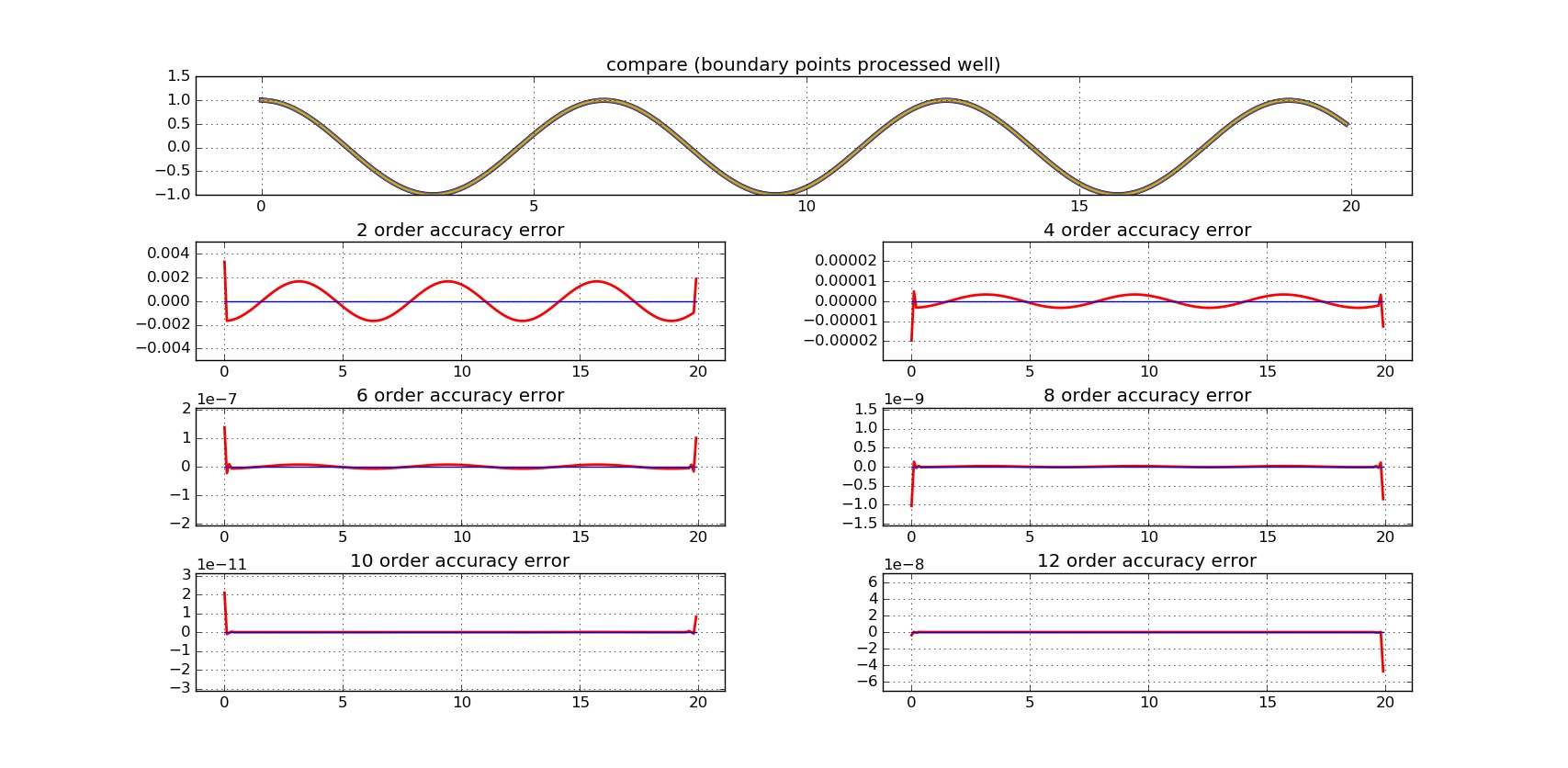For $2i$th order accuracy finite difference(FD), symmetric scheme cannot apply to $i$ boundary points. Thus, asymmetric scheme are required.
Let us take 2nd order FD as example:
2nd order accuracy
point 0
Thus, $f’(x)$ is:
adding $f’(x;\delta)$ and $f’(x;2\delta)$ proportionally:
Thus, for 2nd order accuracy, item of $\delta$ should be eliminated, so:
2ith order accuracy
point 0
For point 0, we have:
Thus, $f’(x)$ is:
adding $f’(x;\delta), f’(x;2\delta),…,f’(x;2i\delta)$ proportionally:
Thus, for 2ith order accuracy, item of $\delta,\delta^2,…,\delta^{2i-1}$ should be eliminated, so:
point 1
…
point k (k=0,1,…,i-1)
For point k, we have:
Thus, $f’(x)$ is:
adding all these $f’(x)$ proportionally:
Thus, for 2ith order accuracy, item of $\delta,\delta^2,…,\delta^{2i-1}$ should be eliminated, so:
Result
For $2i$th order FD accuracy, the $k$th$(k=0,1,2,…,i-1)$ boundary points, $C^k_{(2i)(j)}$ $(j=-k,-k+1,…,-1,1,…,2i-k)$ is the solution of $\eqref{LA}$, while
Examples
FD scheme corresponding to accuracy orders of 2,4,6,8,10,12 are implemented to $f(x) = sin(x)$, their FD results are ploted versus theoretical first order derivative of $f’(x) = cos(x)$, as well as their error.